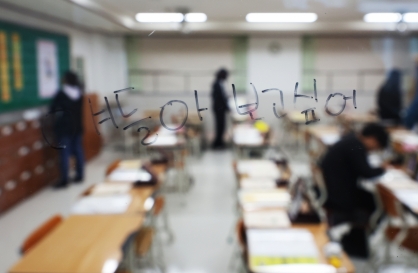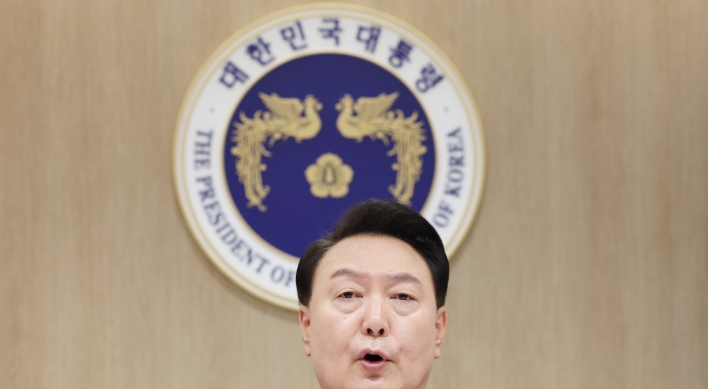Doubts are rising over the government’s assertion that the country’s fiscal soundness can be maintained even if public spending increases at a faster pace than economic growth during President Moon Jae-in’s five-year presidency, which began in May.
Such an optimistic view is based on expectations that tax revenues will continue to rise as the Korean economy is put on a path toward recovery. A draft tax code revision, if passed during the ongoing parliamentary session, would increase levies collected from large corporations and wealthy people.
A fiscal management plan announced by the Ministry of Strategy and Finance last month presumes tax collection will increase by an annual average of 6.8 percent over the coming five years.
The pace is far faster than the annual average nominal growth rate, which the government estimates to be around 4.8 percent for the corresponding period. Nominal growth rate is equal to real growth rate plus inflation.

This would make it possible to keep fiscal health, they say.
But many economists note it is far from guaranteed the government’s prediction will come to fruition.
“It seems overly optimistic to forecast that tax revenue increase will outpace the nominal growth rate by more than 2 percent for five consecutive years,” said Sung Tae-yoon, a professor of economics at Yonsei University.
An analysis of government data showed tax revenue increase rates have been higher than nominal growth rates by 2 percentage points in just four years of the past decade. For another five years, tax revenue increase rates were outpaced by nominal growth rates.
Economists say tax revenues may take a downturn in the latter part of the Moon presidency as the country’s economic growth is expected to decelerate in the years to come.
In July, the government revised up its growth forecast for this year to 3 percent from its previous estimate of 2.6 percent, citing an upturn in exports and facility investment.
But more cautious views have since spread that the revised growth target will be beyond reach as the Korean economy is beleaguered by tensions over North Korea’s nuclear ambitions and other volatile conditions at home and abroad.
Some experts say the growth rate could fall below 2 percent this year and next if business sentiment is further dampened by the Moon administration’s push for policies to increase burden on corporations.
“Decelerated growth would reduce tax revenues and deepen fiscal deficits,” said Cho Kyung-yup, an analyst at the Korea Economic Research Institute, a private think tank.
President Moon’s lavish programs to increase welfare benefits, coupled with the rapid aging of the population, will likely further widen fiscal deficits.
Regarding this, concerns have been raised Korea’s national debt will grow at an uncontrollable pace in the long run.
The MOSF projects the amount of debt owed by the government and public corporations will increase from 670 trillion won ($592 billion) this year to 835 trillion won in 2021, with the ratio of national debt to gross domestic product rising from 39.7 percent to 40.4 percent over the cited period.
Ministry officials tend to emphasize that Korea is relatively less burdened by national debt than other major advanced countries.
In fact, the country’s national debt-to-GDP ratio remains at about one-third of the average for member states of the Organization for Economic Cooperation and Development, which stood at 112.2 percent in 2015.
When income levels and the degree of population aging are factored in, Korea’s debt level may not seem so low, analysts say.
According to recent analysis from the National Assembly Budget Office, Korea’s national debt-to-GDP ratio stood at 35.9 percent in 2014 when its per capita GDP reached $27,000, compared to 45.5 percent for Germany (1994), 52.3 percent for the UK (1998) and 61.6 percent for Japan (1991).
The ratio is projected to reach 40.9 percent in Korea next year when the country is expected to become an aged society, in which people aged 65 or above account for more than 14 percent of the population.
The corresponding figures were lower at 32.6 percent in France and 36.8 percent in Germany. The two countries became aged societies in 1979 and 1972, respectively.
The NABO study raised the need for stricter management of Korea’s national debt, which grew by an annual average of 11.6 percent for the period between 2000 and 2016, the fourth-fastest among 32 OECD members surveyed. The three countries that outpaced Korea were relatively small economies -- Latvia, Luxembourg and Estonia.
A separate report released by the Bank of Korea last month also rang alarm bells over the long-term erosion of fiscal soundness. It predicted Korea would need 140 trillion won in additional government spending over the next five decades to cope with population aging and low birthrates while its revenues would decrease by 50 trillion won due to a shrinking workforce.
By Kim Kyung-ho (khkim@heraldcorp.com)
Such an optimistic view is based on expectations that tax revenues will continue to rise as the Korean economy is put on a path toward recovery. A draft tax code revision, if passed during the ongoing parliamentary session, would increase levies collected from large corporations and wealthy people.
A fiscal management plan announced by the Ministry of Strategy and Finance last month presumes tax collection will increase by an annual average of 6.8 percent over the coming five years.
The pace is far faster than the annual average nominal growth rate, which the government estimates to be around 4.8 percent for the corresponding period. Nominal growth rate is equal to real growth rate plus inflation.

This would make it possible to keep fiscal health, they say.
But many economists note it is far from guaranteed the government’s prediction will come to fruition.
“It seems overly optimistic to forecast that tax revenue increase will outpace the nominal growth rate by more than 2 percent for five consecutive years,” said Sung Tae-yoon, a professor of economics at Yonsei University.
An analysis of government data showed tax revenue increase rates have been higher than nominal growth rates by 2 percentage points in just four years of the past decade. For another five years, tax revenue increase rates were outpaced by nominal growth rates.
Economists say tax revenues may take a downturn in the latter part of the Moon presidency as the country’s economic growth is expected to decelerate in the years to come.
In July, the government revised up its growth forecast for this year to 3 percent from its previous estimate of 2.6 percent, citing an upturn in exports and facility investment.
But more cautious views have since spread that the revised growth target will be beyond reach as the Korean economy is beleaguered by tensions over North Korea’s nuclear ambitions and other volatile conditions at home and abroad.
Some experts say the growth rate could fall below 2 percent this year and next if business sentiment is further dampened by the Moon administration’s push for policies to increase burden on corporations.
“Decelerated growth would reduce tax revenues and deepen fiscal deficits,” said Cho Kyung-yup, an analyst at the Korea Economic Research Institute, a private think tank.
President Moon’s lavish programs to increase welfare benefits, coupled with the rapid aging of the population, will likely further widen fiscal deficits.
Regarding this, concerns have been raised Korea’s national debt will grow at an uncontrollable pace in the long run.
The MOSF projects the amount of debt owed by the government and public corporations will increase from 670 trillion won ($592 billion) this year to 835 trillion won in 2021, with the ratio of national debt to gross domestic product rising from 39.7 percent to 40.4 percent over the cited period.
Ministry officials tend to emphasize that Korea is relatively less burdened by national debt than other major advanced countries.
In fact, the country’s national debt-to-GDP ratio remains at about one-third of the average for member states of the Organization for Economic Cooperation and Development, which stood at 112.2 percent in 2015.
When income levels and the degree of population aging are factored in, Korea’s debt level may not seem so low, analysts say.
According to recent analysis from the National Assembly Budget Office, Korea’s national debt-to-GDP ratio stood at 35.9 percent in 2014 when its per capita GDP reached $27,000, compared to 45.5 percent for Germany (1994), 52.3 percent for the UK (1998) and 61.6 percent for Japan (1991).
The ratio is projected to reach 40.9 percent in Korea next year when the country is expected to become an aged society, in which people aged 65 or above account for more than 14 percent of the population.
The corresponding figures were lower at 32.6 percent in France and 36.8 percent in Germany. The two countries became aged societies in 1979 and 1972, respectively.
The NABO study raised the need for stricter management of Korea’s national debt, which grew by an annual average of 11.6 percent for the period between 2000 and 2016, the fourth-fastest among 32 OECD members surveyed. The three countries that outpaced Korea were relatively small economies -- Latvia, Luxembourg and Estonia.
A separate report released by the Bank of Korea last month also rang alarm bells over the long-term erosion of fiscal soundness. It predicted Korea would need 140 trillion won in additional government spending over the next five decades to cope with population aging and low birthrates while its revenues would decrease by 50 trillion won due to a shrinking workforce.
By Kim Kyung-ho (khkim@heraldcorp.com)



















